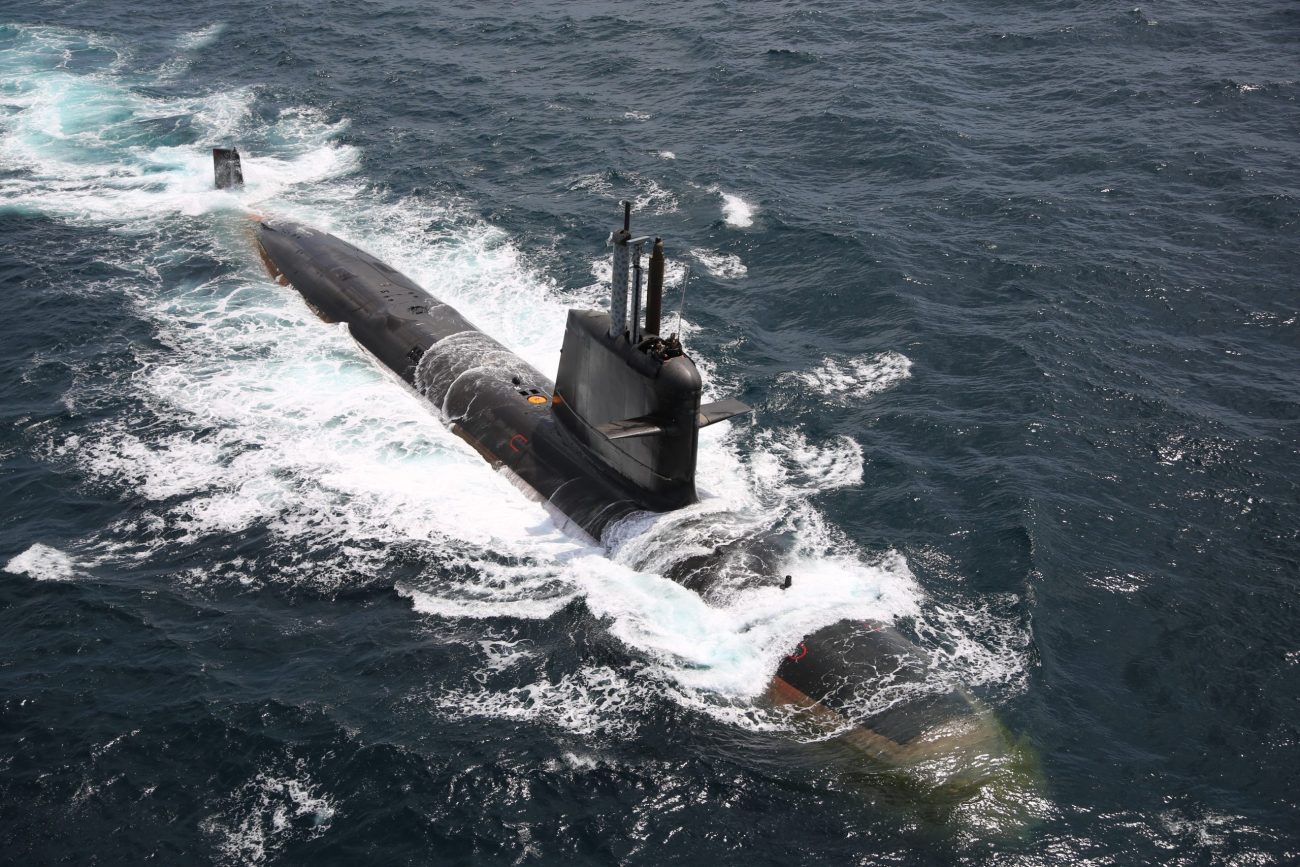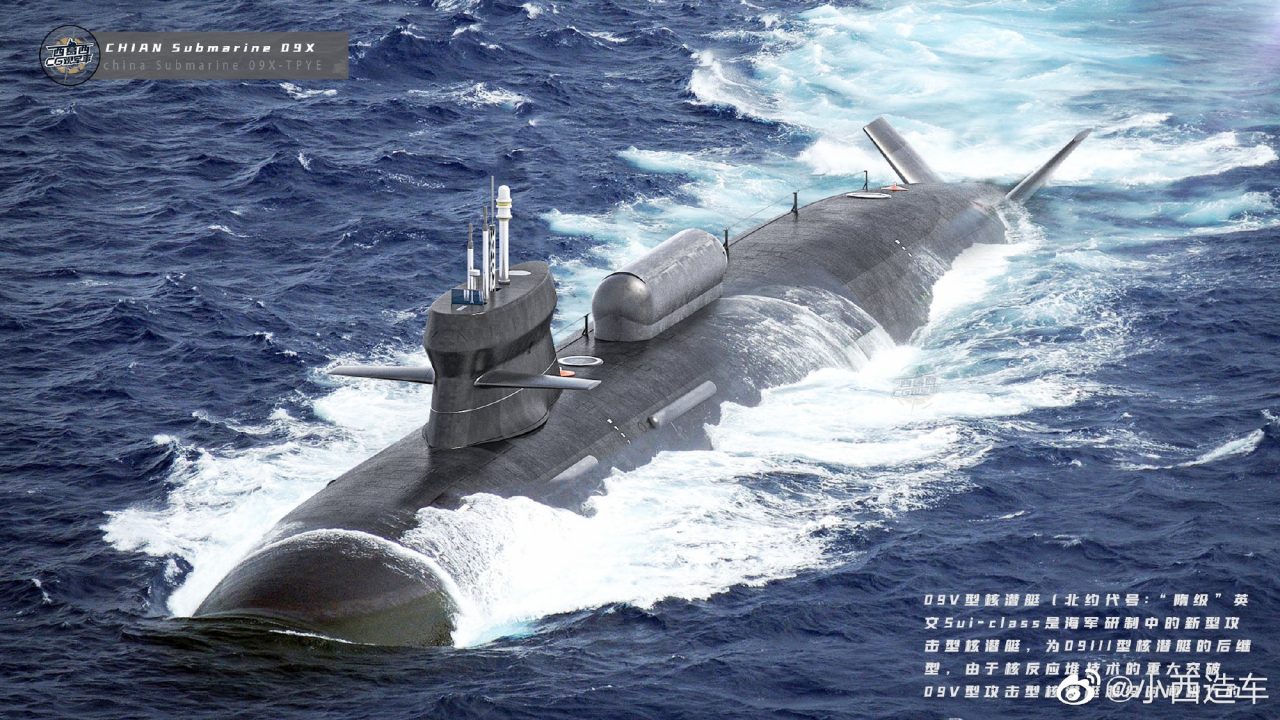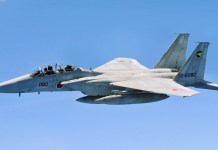The Chinese undersea fleet has been growing exponentially in quantity and quality. For the first time, China has been able to deploy at least one nuclear-armed submarine constantly at sea.
Ukraine Wobbles As Its ‘Game Changing’ Weapons – Leopard MBTs, Storm Shadow Missiles, HIMARS – Fail To Change The Game
Compared to this, the Indian submarine program has been growing steadily, albeit a tad bit slower, making it difficult to catch up with its giant assertive adversary in the East.
However, in the past few days, India has managed to have an incredible feat by collaborating with Germany, which has the ‘best technology’ when it comes to submarines.
The leading German shipbuilders ThyssenKrupp Marine Systems recently signed a Memorandum of Understanding with Indian Mazagon Docks Ltd (MDL) and are the frontrunner to bag the country’s Project 75 ‘I’ (India) to build six conventional submarines with the AIP technology.
The project aims to equip India with the ability to design and produce 24 conventional underwater platforms as part of a 30-year submarine-building program.
Presently the Indian submarine fleet has 16 conventional submarines, and apart from the six recently-built submarines, the rest are over 30 years old and approaching their decommissioning date.
In comparison, China’s submarine force makes even the world powers apprehensive of its sheer numbers. Its submerged force has 76 platforms – comprising 8 SSBNs (ballistic missile submarines), 13 SSNs (nuclear-powered attack submarines), and 55 SSKs (diesel-electric submarines).
What adds to the woes is that India remains the only submarine-operating country that has not designed and built its submarines despite operating them for over five decades.
Despite China’s naval might, Beijing lags in submarine propulsion technology. Propulsion engineering is one of its biggest structural flaws, as the bulk of engines used in PLA submarines are foreign, especially German. You can read the EurAsian Times report here.
Giving Air To Indian Submarine Ambitions
In light of this, the collaboration with Germany has given hope to Indian shipbuilding ambitions.
“Only the Germans have successfully operationalized a Fuel cell AIP system on board their submarines, which Israel, Germany, and Turkey are also using. The South Korean AIP system has also been developed from the German one,” Commodore (retd) Anil Jai Singh told the EurAsian Times.
Commodore Singh has 28 years of experience as a Submariner in the Indian Navy. He specializes in Undersea Warfare (Weapons and Systems) from the former Soviet Union.
Only Germany’s ThyssenKrupp Marine Systems and South Korea’s Daewoo Shipbuilding have SSK designs serving in their navies with installed and functioning AIPs.
“Presently, ThyssenKrupp claims to have supplied 70 percent of the non-nuclear submarine fleet globally from its shipyards. Its HDW Fuel Cell Air-independent Propulsion system has achieved a low noise and infrared signature and the technology is available,” Commander (retd) Milind Kulshreshta said. He is a specialist in warfare tactics including sub-surface.
AIP-powered conventional diesel-electric submarines (SSK) are midway between nuclear-powered boats and non-AIP SSKs. It allows an SSK to remain submerged for 10 to 14 days without needing to surface to charge its batteries, which might get it detected.
Other SSKs can stay underwater for roughly 48 hours. The fuel-cell-based AIP is unique, as it generates its hydrogen requirement on board.
“An AIP enhances a submarine’s underwater endurance between battery charges by three to four times, thus reducing its vulnerability to detection. As the Chinese naval presence increases in the Indian Ocean, submarines with AIP will be able to monitor them much better without getting detected,” Commodore Singh said.
“This will be particularly relevant in the eastern Indian Ocean and the Bay of Bengal. In the Arabian Sea and the western Indian Ocean, they will enhance our undersea warfare capability against our adversaries there,” Singh added while referring to Pakistan.
Indian Tender
Two years ago, when India opened the tender, the German shipbuilder showed no interest in jointly manufacturing submarines with India.
But, the Russian-Ukraine war made Germany come out of the shadows of World War II and assume a more assertive role in leading the defenses against Russia and, hitherto, China, which adopted a more hostile attitude in the Indo-Pacific region.
The ThyssenKrupp will, jointly with MDL, bid for the US$5.2 billion project for the Indian Navy.
India purchased four Type 1500 conventional submarines from West Germany’s HDW in 1981 to acquire submarine-building know-how. But, the Submarine Design Group of the Indian Navy could not absorb the capability to design or develop a submarine.
The HDW submarines were accompanied by a detailed plan to indigenously build the fifth and sixth submarines. The plan fizzled out as the company got blacklisted in India in 1987 on suspicion of bribery charges.
For a long time, India has been trying to get this critical technology from Germany, France, and Russia. In 2005, India inked a deal with the Franco-Spanish consortium Armaris to build six Scorpene conventional submarines.
The fifth Scorpene class submarine was commissioned in the Indian Navy in January 2023. The subs are also without AIPs, and plans are afoot to retrofit the vessels with the technology.

The delays in the submarine induction have forced the Indian Navy to give a mid-life refit to its SSK-209s (German HDWs) and EKMs (Russian Kilos) to keep them functional for an additional 10-15 years.
Chinese Submarine Onslaught
China makes no bones about its intentions to dominate the Indo-Pacific and, more specifically, Indian Ocean Regions, India’s submarine capability remains woefully short, with only 16 conventional and SSN (Akula leased from Russia) and one SSBN (INS Arihant).
Considering it took 11 years for the first Scorpene class submarine to enter the Indian Navy’s fleet after signing the deal, the submarines to be built under Project 75 ‘I’ are at least a decade away from entering operations.
A general naval rule-of-thumb is that for every vessel operating, two more are required – one preparing for deployment and one standing down from recent operations. The numbers are needed to keep up with the maintenance and crew’s rest and training schedule.
During peacetime, only one-third of the fleet is expected to be deployed. More vessels can be deployed in wartime, but it is still prudent to assess the availability realistically.
The Chinese Navy is not just forging ahead with the induction of submarines in its fleet but also equipping India’s neighbor Pakistan with state-of-the-art technology.
The coming of AIP technology to the Indian Navy, as reported by the EurAsian Times earlier, will put its fleet in a better position than Pakistan with all three of its French Agosta-90B (PNS Khalid, Saad, and Hamza) powered by AIPs.
Pakistan is also expected to receive eight 39 A Yuan-class AIP-powered submarines by the end of 2023 under a US$5 billion deal with China.

The Scorpene Class will be retrofitted with the indigenously developed AIP in the advanced testing stages. Commander Arvind Mathur, a former submariner, had earlier pointed out to the EurAsian Times that upgrading a weapons platform with new technology will reduce operational readiness as the repairs will take at least a year.
“You don’t want to downgrade your expensive boat by fitting unproven technology. But till you fit your prototype plant onto an operational boat, you cannot find the problems and shortcomings. So, it is a chicken and egg issue,” Mathur adds.
One thing is clear, if India wants to compete with China in the Indo-Pacific effectively, it needs to level up its underwater game.
- Ritu Sharma has written on defense and foreign affairs for over a decade. She holds a Master’s Degree in Conflict Studies and Management of Peace from the University of Erfurt, Germany. Her areas of interest include Asia-Pacific, the South China Sea, and Aviation history.
- She can be reached at ritu.sharma (at) mail.com




